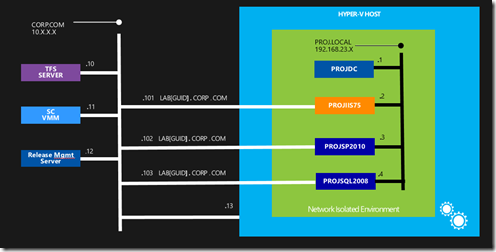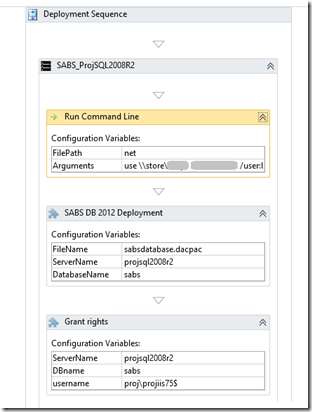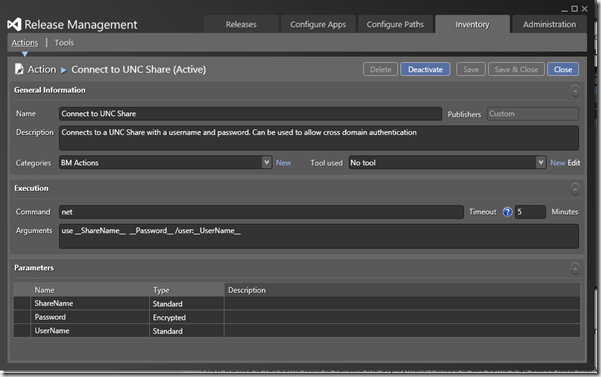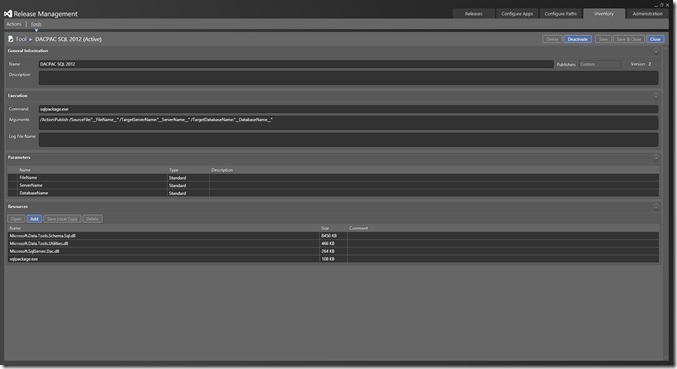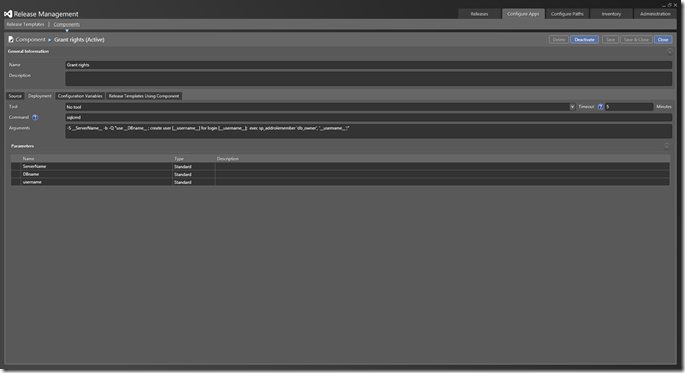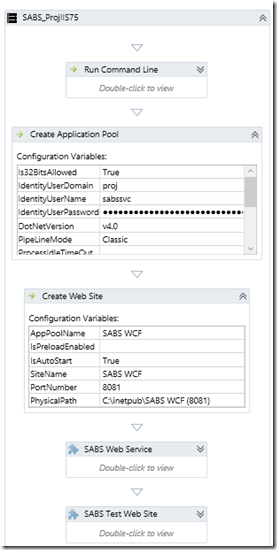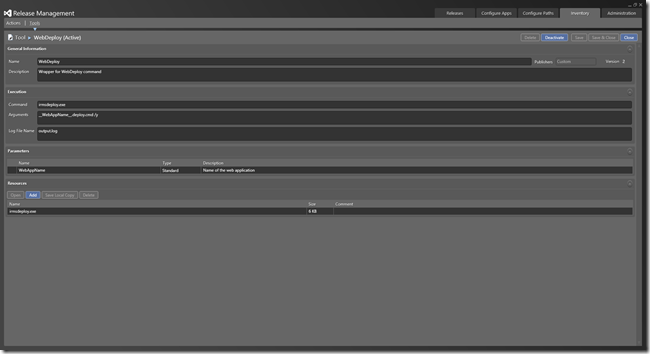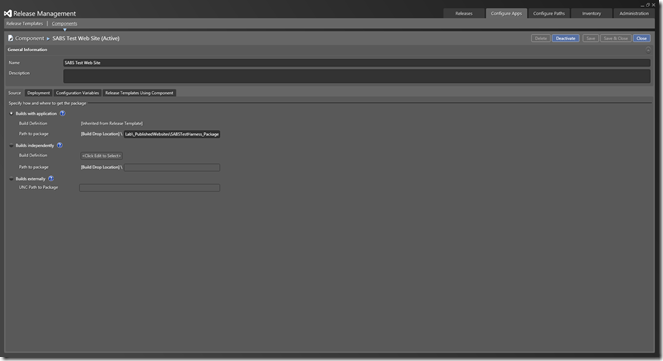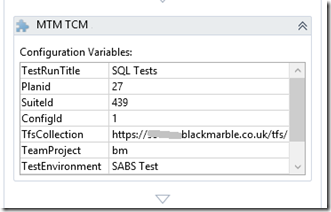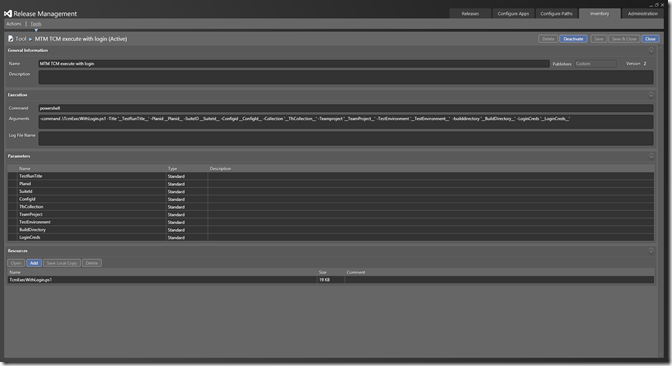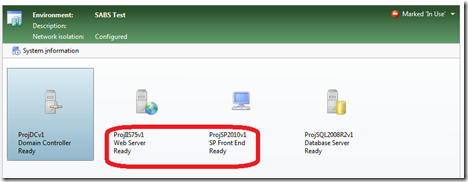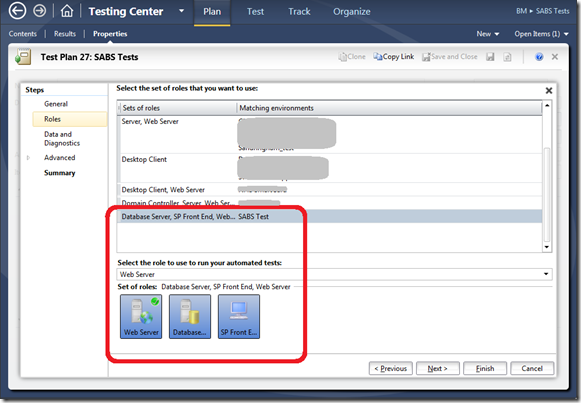What I learnt getting Release Management running with a network Isolated environment
Updated 20 Oct 2014 – With notes on using an Action for cross domain authentication
In my previous post I described how to get a network isolated environment up and running with Release Management, it is all to do with shadow accounts. Well getting it running is one thing, having a useful release process is another.
For my test environment I needed to get three things deployed and tested
- A SQL DB deployed via a DACPAC
- A WCF web service deployed using MSDeploy
- A web site deployed using MSDeploy
My environment was a four VM network isolated environment running on our TFS Lab Management system.
The roles of the VMs were
- A domain controller
- A SQL 2008R2 server (Release Management deployment agent installed)
- A VM configured as a generic IIS web server (Release Management deployment agent installed)
- A VM configured as an SP2010 server (needed in the future, but its presence caused me issues so I will mention it)
Accessing domain shares
The first issue we encountered was that we need the deployment agent on the VMs to be able to access domain shares on our corporate network, not just ones on the local network isolated domain. They need to be able to do this to download the actual deployment media. The easiest way I found to do this was to place a NET USE command at the start of the workflow for each VM I was deploying too. This allowed authentication from the test domain to our corporate domain and hence access for the agent to get the files it needed. The alternatives would have been using more shadow accounts, or cross domain trusts, both things I did not want the hassle of managing.
The run command line activity runs the net command with the arguments \\storedropsshare [password] /user:[corpdomainaccount]
I needed to use this command on each VM I was running the deployment agent on, so appears twice in this workflow, once for the DB server and once for the web server.
Updated 20 Oct 2014: After using this technique in a few release I realised it was a far better idea to have a action to do the job. The technique I mentioned above meant the password was in clear text, a parameterised action allows it to be encrypted.
To create an action (and it can be an action, not a component as it does not need to know the build location) needs the following settings
Version of SSDT SQL tools
My SQL instance was SQL 2008R2, when I tried to use the standard Release Management DACPAC Database Deployer tool it failed with assembly load errors. Basically the assemblies downloaded as part of the tool deployment did not match anything on the VM.
My first step was to install the latest SQL 2012 SSDT tools on the SQL VM. This did not help the problem as there was still a mismatch between the assemblies. I therefore create a new tool in the Release Management inventory, this was a copy of the existing DACPAC tool command, but using the current version of the tool assemblies from SSDT 2012
Using this version of the tools worked, my DB could be deployed/updated.
Granting Rights for SQL
Using SSDT to deploy a DB (especially if you have the package set to drop the DB) does not grant any user access rights.
I found the easiest way to grant the rights the web service AppPool accounts needed was to run a SQL script. I did this by creating a component for my release with a small block of SQL to create DB owners, this is the same technique as used for the standard SQL create/drop activities shipped in the box with Release Management.
The arguments I used for the sqlcmd were -S __ServerName__ -b -Q "use __DBname__ ; create user [__username__] for login [__username__]; exec sp_addrolemember 'db_owner', '__username__';"
Once I had created this component I could pass the parameters I needed add DB owners.
Creating the web sites
This was straight forward, I just used the standard components to create the required AppPools and the web sites. It is worth nothing that these command can be run against existing site, the don’t error if the site/AppPool already exists. This seems to be the standard model with Release Management as there is no decision (if) branching in the workflow, so all tools have to either work or stop the deployment.
I then used the irmsdeploy.exe Release Management component to run the MSDeploy publish on each web site/service
A note here: you do need make sure you set the path to the package to be the actual folder the .ZIP file is in, not the parental drop folder (in my case Lab_PublishedWebsitesSABSTestHarness_Package not Lab)
Running some integration tests
We now had a deployment that worked. It pulled the files from our corporate LAN and deployed them into a network isolated lab environment.
I now wanted to run some tests to validate the deployment. I chose to use some SQL based tests that were run via MSTest. These tests had already been added to Microsoft Test Manager (MTM) using TCM, so I thought I had all I needed.
I added the Release Management MTM component to my workflow and set the values taken from MTM for test plan and suite etc.
However I quickly hit cross domain authentication issues again. The Release Management component does all this test management via a PowerShell script that runs TCM. This must communicate with TFS, which in my system was in the other domain, so fails.
The answer was to modify the PowerShell script to also pass some login credentials
The only change in the PowerShell script was that each time the TCM command is called the /login:$LoginCreds block is added, where $LoginCreds are the credentials passed in the form corpdomainuser,password
$testRunId = & "$tcmExe" run /create /title:"$Title" /login:$LoginCreds /planid:$PlanId /suiteid:$SuiteId /configid:$ConfigId /collection:"$Collection" /teamproject:"$TeamProject" $testEnvironmentParameter $buildDirectoryParameter $buildDefinitionParameter $buildNumberParameter $settingsNameParameter $includeParameter
An interesting side note is that if you try to run the TCM command at the command prompt you only need to provide the credentials on the first time it is run, they are cached. This does not seem to be the case inside the Release Management script, TCM is run three times, each time you need to pass the credentials.
Once this was in place, and suitable credentials added to the workflow I expected my test to run. They did but 50% failed – Why?
It runs out the issue was that in my Lab Management environment setup I had set the roles of both IIS server and SharePoint server to Web Server.
My automated test plan in MTM was set to run automated tests on the Web Server role, so sent 50% of the tests to each of the available servers. The tests were run by Lab Agent (not the deployment agent) which was running as the Network Service machine accounts e.g. ProjProjIIS75$ and ProjProjSp2010$. Only for former of these had been granted access to the SQL DB (it was the account being used for the AppPool), hence half the test failed, with DB access issues
I had two options here, grant both machine accounts access, or alter my Lab Environment. I chose the latter. I put the two boxes in different roles
I then had to load the test plan in MTM so it was updated with the changes
Once this was done my tests then ran as expected.
Summary
So I now have a Release Management deployment plan that works for a network isolated environment. I can run integration tests, and will soon add some CodeUI ones, it is should only be a case of editing the test plan.
It is an interesting question of how well Release Management, in its current form, works with Lab Management when it is SCVMM/Network Isolated environment based, is is certainly not its primary use case, but it can be done as this post shows. It certainly provides more options than the TFS Lab Management build template we used to use, and does provide an easy way to extend the process to manage deployment to production.
